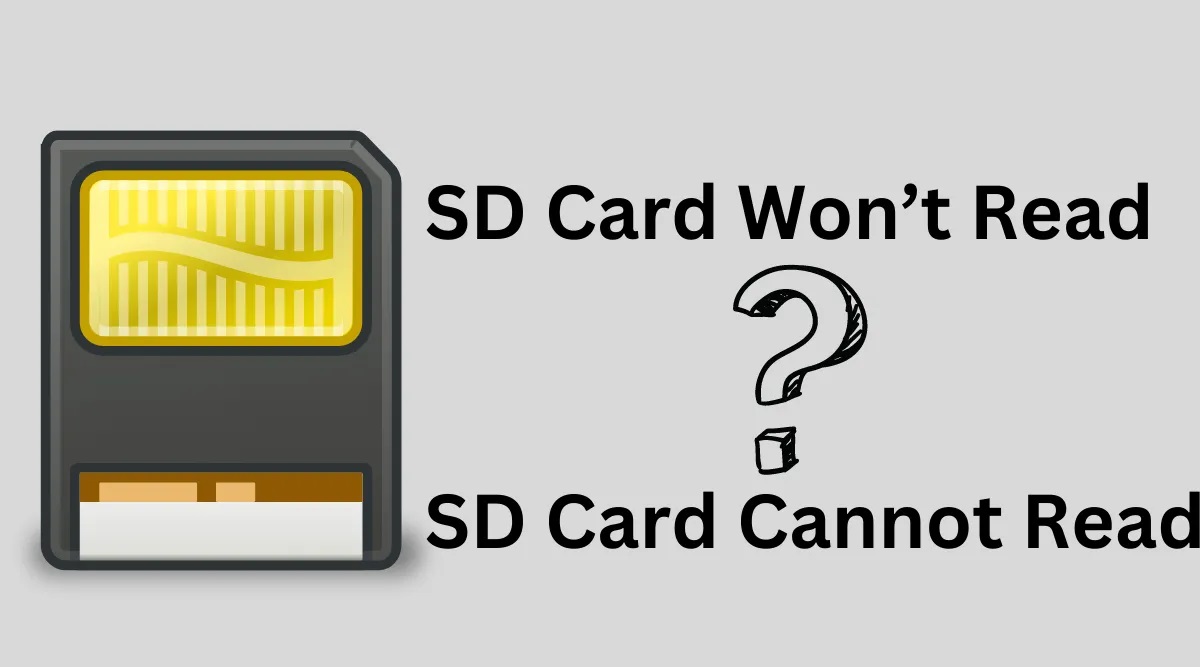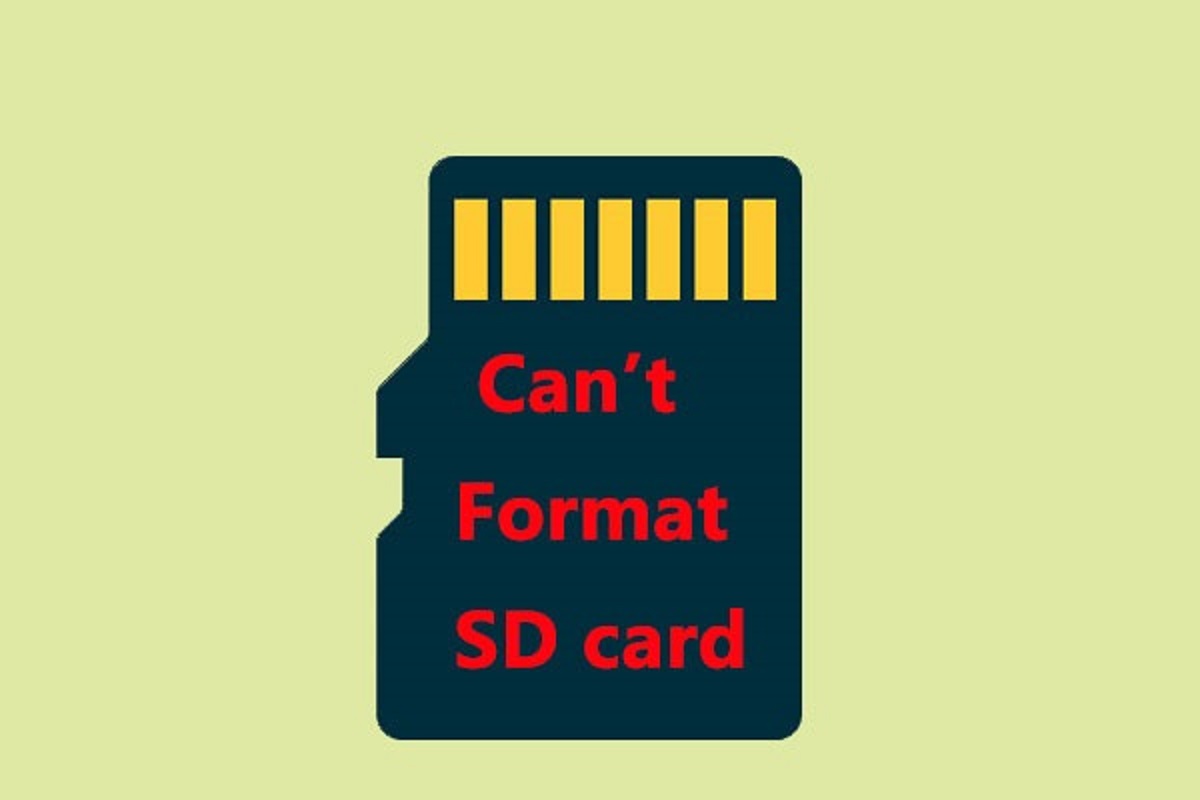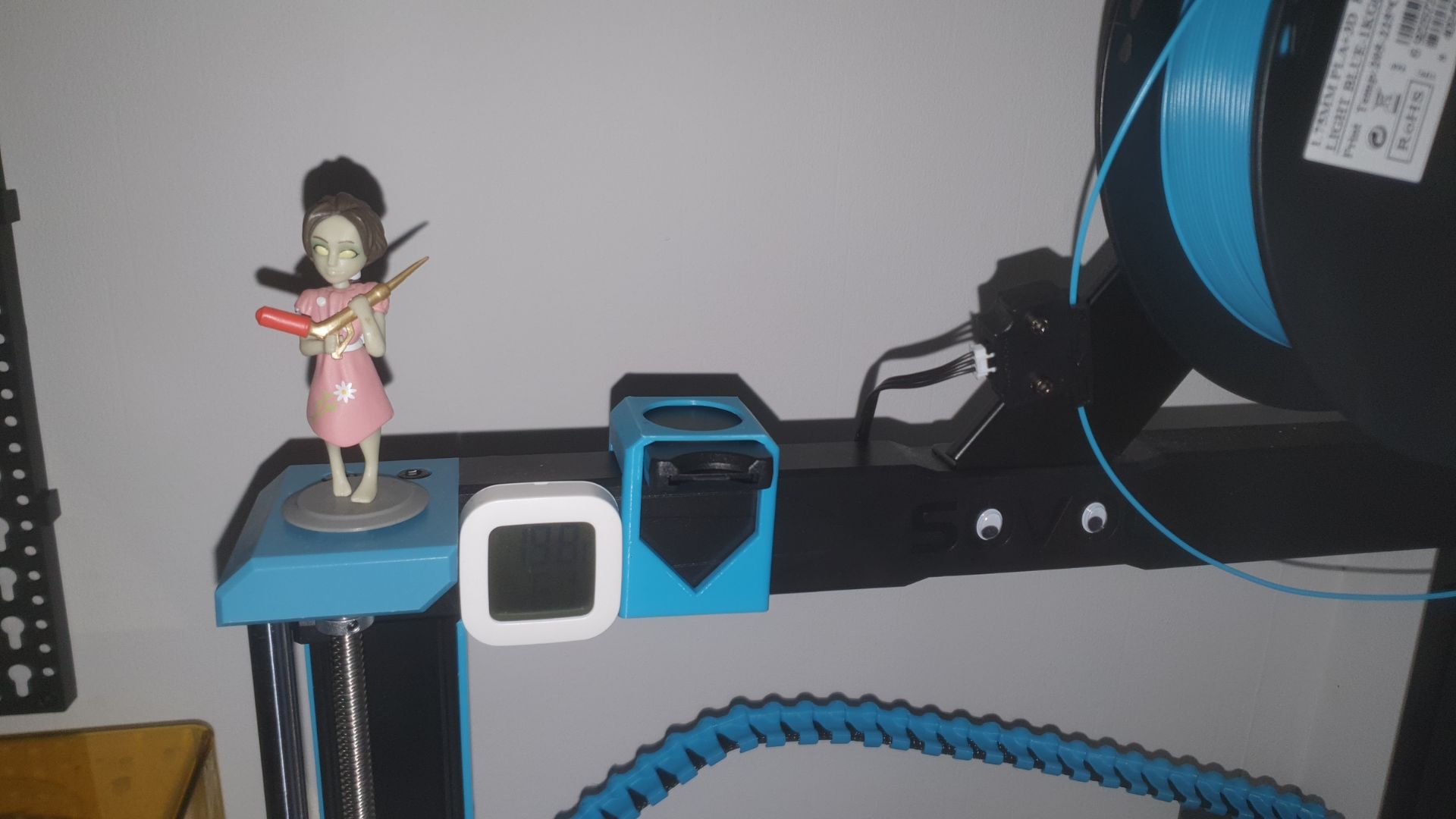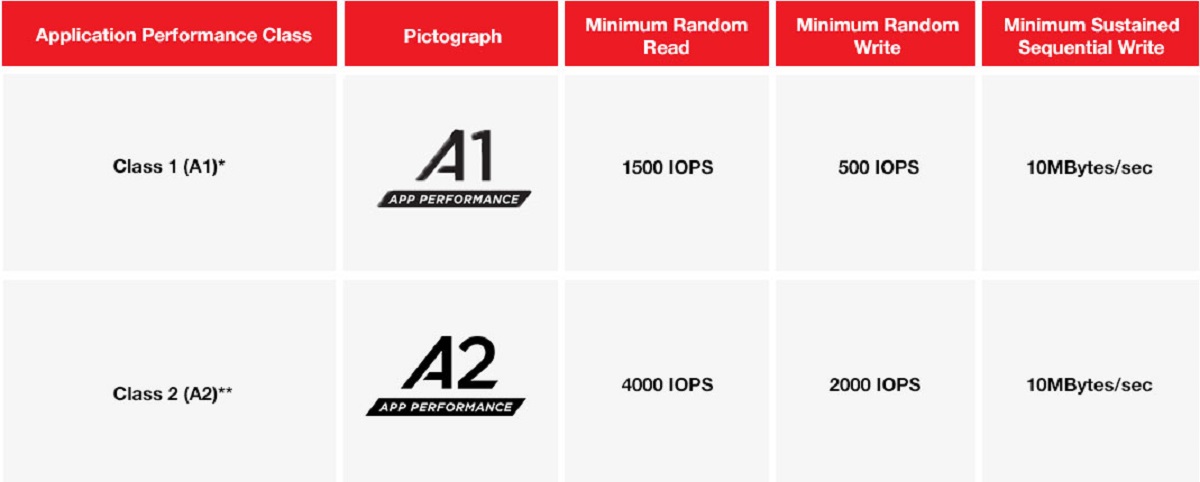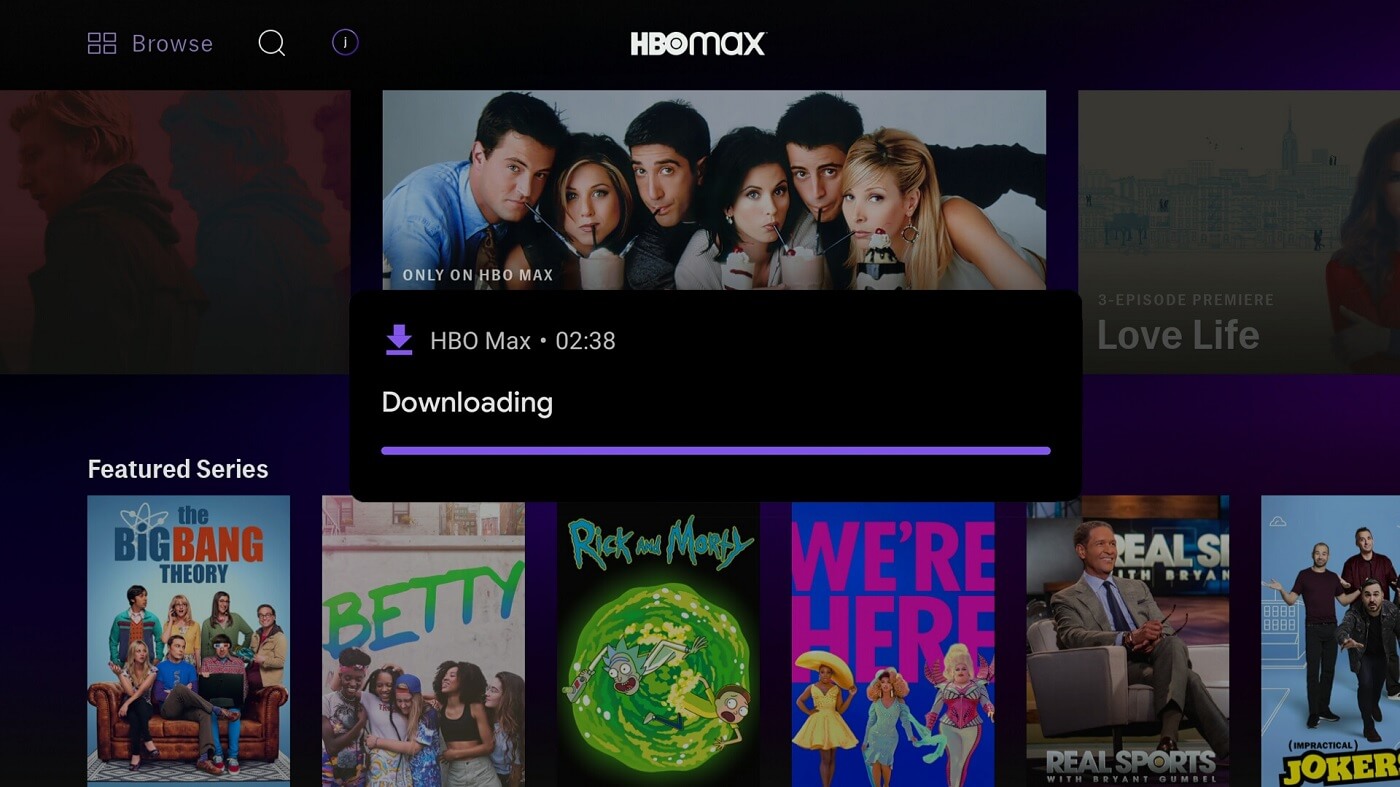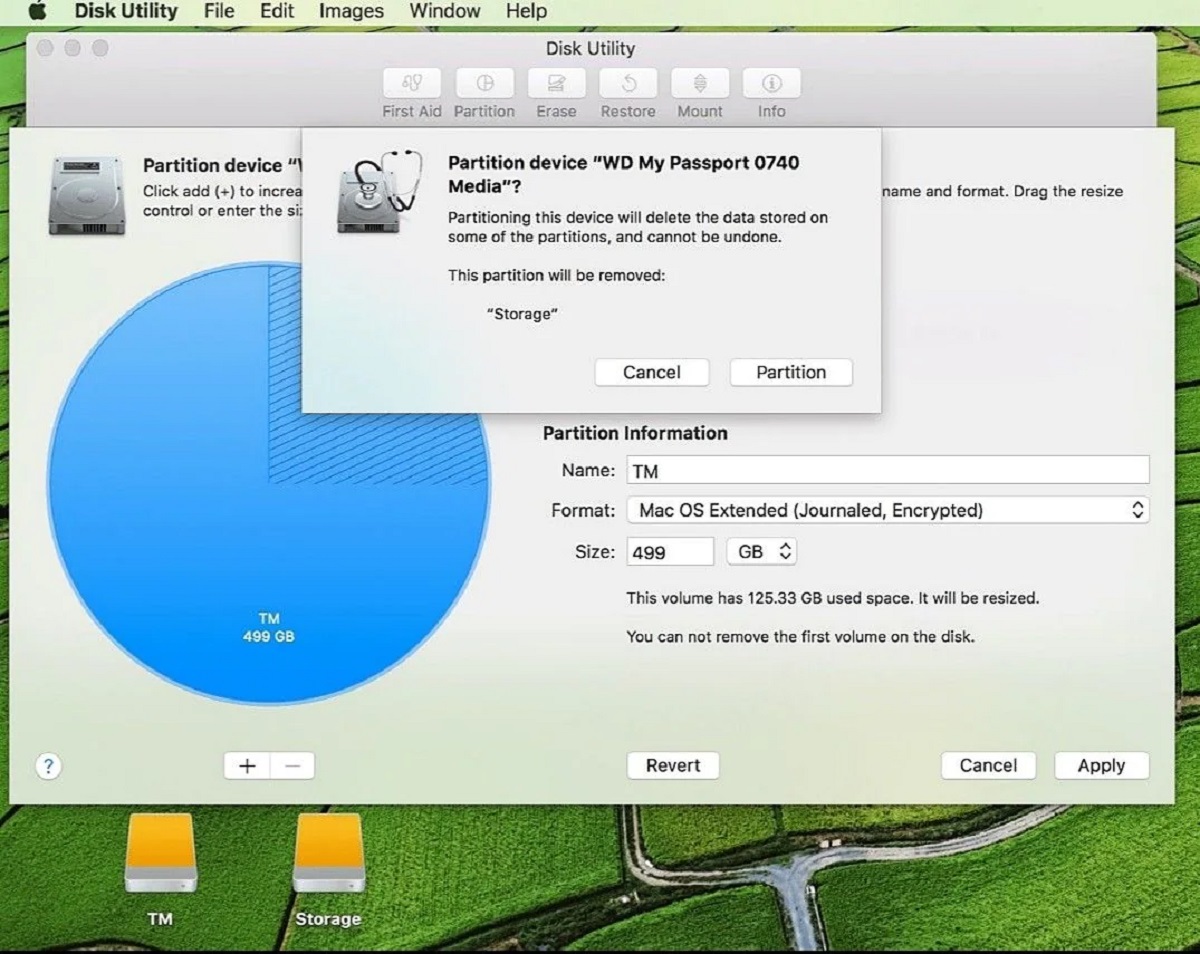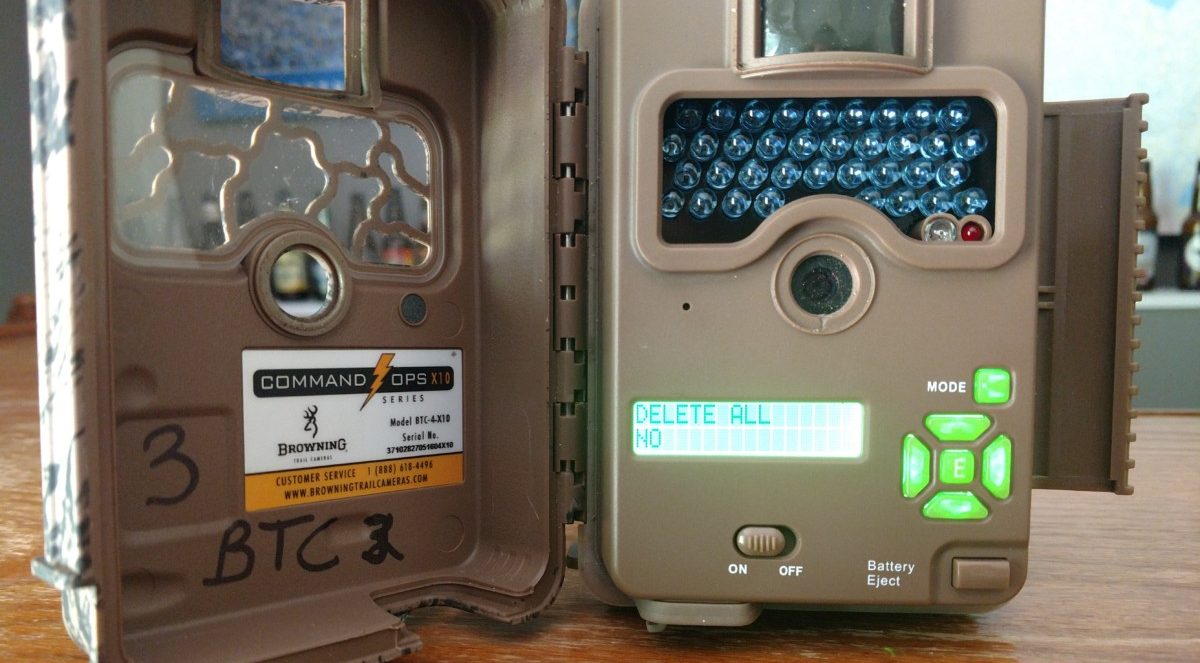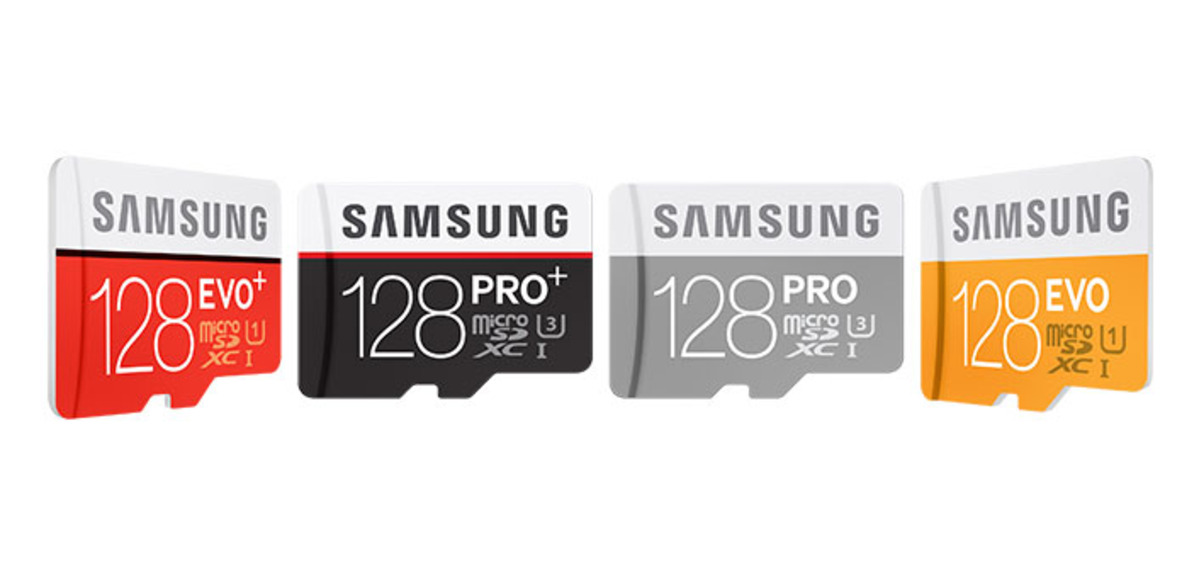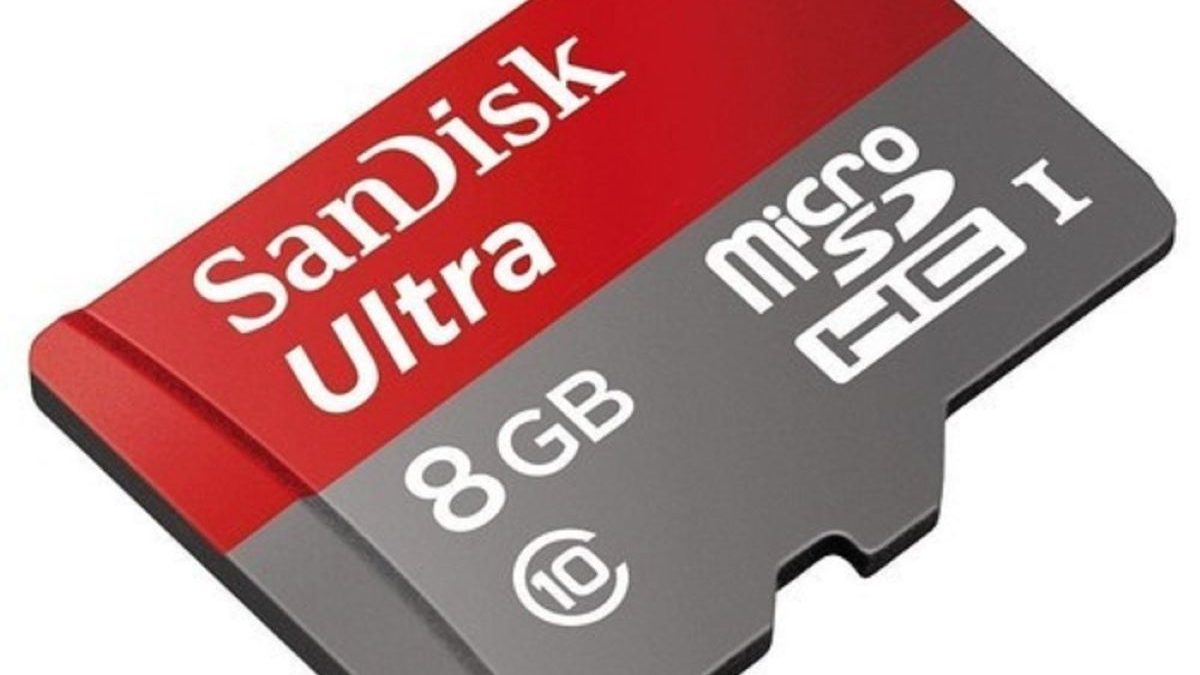Introduction
Welcome to the world of digital storage where the humble SD card plays a vital role. These small, portable devices have become a popular choice for expanding storage capacity in smartphones, cameras, and other electronic devices. However, like any technology, SD cards can encounter issues, and one common problem that many users face is when their SD card won’t read.
Imagine you are trying to access important photos, videos, or files stored on your SD card, only to be met with frustration when it refuses to connect or shows error messages. It can be incredibly inconvenient and even worrisome, especially if you have critical data stored on it.
While it’s frustrating, the good news is that most SD card reading issues have a solution. In this article, we will explore the reasons behind SD card reading problems and provide practical solutions to help you get your SD card back up and running.
Whether your SD card is not being recognized by your device, displaying errors, or simply behaving erratically, we will guide you through the troubleshooting process to identify the root cause of the issue and provide solutions that can hopefully resolve it.
Note that the solutions provided in this article are applicable to various devices, such as smartphones, cameras, and laptops, that utilize SD cards. Keep in mind that different devices may have specific settings or steps, so it’s important to refer to your device’s manual or support documentation if needed.
So, let’s dive deeper and explore the common reasons why your SD card won’t read, along with effective solutions to fix the problem.
Common Reasons Why SD Cards Won’t Read
Before diving into the solutions, it’s essential to understand why your SD card might not be reading in the first place. Here are some common reasons why this issue occurs:
- Insufficient Contact: The metal contacts on the SD card or in the card reader can accumulate dirt, dust, or debris over time, leading to poor connection and preventing the card from being read.
- Card Compatibility Issues: While SD cards are widely used, not all cards are universally compatible with all devices. Some devices may only support certain types or capacities of SD cards. Using an incompatible card could result in it not being recognized.
- Card File System Errors: File system errors can occur on the SD card, making it unreadable by the device. This could be due to improper ejection, power failure during file transfer, or a corrupted file system.
- Corrupted or Damaged SD Card: SD cards are susceptible to physical damage or corruption, which can lead to reading issues. This can happen due to excessive heat, moisture, physical impact, or manufacturing defects.
- Issues with Card Reader or Device: Sometimes, the problem lies not with the SD card itself, but with the card reader or the device in which the card is being inserted. Faulty card readers or outdated device firmware can prevent SD cards from being read.
- Software or Driver Problems: Outdated or incompatible device drivers or software can interfere with the SD card reading process. In such cases, the device may fail to recognize the card or show error messages.
Understanding these common reasons can help you narrow down the cause of the issue and apply the appropriate solution to get your SD card working again.
Now that we’ve explored the common reasons why SD cards won’t read, let’s move on to the next section, where we will delve into the specific solutions for each of these issues.
Insufficient Contact
One of the common reasons why an SD card may not be reading is due to insufficient contact between the card and the card reader. Over time, the metal contacts on the SD card or in the card reader can accumulate dirt, dust, or debris, leading to poor connection and preventing the card from being read.
If you suspect that insufficient contact might be the issue, follow these steps to clean the contacts and improve the connection:
- Power off the device that the SD card is inserted into. This ensures that no data is being transmitted and reduces the risk of data loss or damage.
- Remove the SD card from the device or card reader gently.
- Inspect both the SD card and the card reader for any visible dirt, dust, or debris. Use a soft, lint-free cloth or cotton swab to gently clean the contacts on the SD card and in the card reader. Be careful not to apply excessive pressure or use any liquid cleaners, as this can cause damage.
- Once the contacts are clean, reinsert the SD card back into the card reader or device, ensuring it is properly aligned.
- Power on the device and check if the SD card is now being recognized. Try accessing the data on the card to confirm if the issue is resolved.
If cleaning the contacts does not resolve the issue, you can try inserting the SD card into a different card reader or device to determine if the problem lies with the original card reader. This can help identify whether the faulty connection is due to the SD card or the card reader itself.
Remember, when handling SD cards, it’s important to be gentle and avoid bending or damaging the card or its contacts. Additionally, ensure that you properly insert the SD card into the card reader or device to establish a secure and reliable connection.
Now that we’ve covered the issue of insufficient contact, let’s move on to explore another common reason why SD cards may not read: card compatibility issues.
Card Compatibility Issues
Another common reason why an SD card may not be reading is due to compatibility issues between the card and the device in which it is being used. While SD cards are widely used, not all cards are universally compatible with all devices. Some devices may only support certain types or capacities of SD cards, and using an incompatible card could result in it not being recognized.
If you suspect that the compatibility between your SD card and device is causing the reading issue, here are some steps you can take to troubleshoot:
- Check the specifications of your device: Consult the user manual, official documentation, or the manufacturer’s website of your device to determine the supported SD card types, classes, and capacities. This will help you ensure that the SD card you are using is compatible.
- Verify the SD card type: There are different types of SD cards available, such as SD, SDHC, and SDXC. Make sure you are using the correct type of card that is supported by your device. Trying to use an incompatible type may result in the card not being recognized.
- Check the SD card class: SD cards have different classes, such as Class 2, Class 4, Class 10, etc., which indicate the card’s minimum write speed. Some devices may have specific requirements regarding the card class. Ensure that the SD card you are using meets or exceeds the minimum required class for your device.
- Test the SD card in another compatible device: If possible, try inserting the SD card into another device that is known to support the same type of card. This can help determine if the issue lies with the card or with the original device.
- Try using a different SD card: If you have access to another SD card that is compatible with your device, try using it to see if it is recognized. If the new card works, it indicates that the previous card may be incompatible with your device. However, if the new card also fails to read, it suggests that the issue may lie with the device itself.
By following these steps, you can identify whether the SD card compatibility is causing the reading issue. If it is indeed a compatibility problem, consider using a different SD card that is known to be compatible with your device to ensure reliable performance.
Now that we’ve explored card compatibility issues, let’s move on to the next section, where we will address another potential cause of SD card reading problems: card file system errors.
Card File System Errors
Card file system errors can also be a reason why an SD card won’t read properly. These errors can occur due to improper ejection of the card, power failure during file transfer, or a corrupted file system. When the file system of the SD card is corrupted or damaged, the device may struggle to read the data on the card.
If you suspect that file system errors are causing the issue, you can try the following solutions:
- Restart the device: Sometimes, a simple restart can resolve file system errors. Power off the device, remove the SD card, wait for a few moments, reinsert the card, and power on the device again. This can refresh the system and clear any temporary file system issues.
- Use chkdsk utility (Windows): If you are using a Windows computer, you can utilize the chkdsk (check disk) utility to scan and repair file system errors on the SD card. Connect the SD card to your computer using a card reader, open the Command Prompt, and run the chkdsk command followed by the drive letter assigned to the SD card.
- Format the SD card: If the file system errors persist, you may need to format the SD card. Formatting will erase all data on the card, so be sure to back up your files before proceeding. Connect the SD card to your computer, access the Disk Management utility (Windows) or Disk Utility (Mac), and format the SD card with the appropriate file system (e.g., FAT32 or exFAT).
- Use disk repair tools (Mac): For Mac users, you can utilize the built-in Disk Utility or third-party disk repair tools like DiskWarrior or TechTool Pro to scan and repair file system errors on the SD card. Follow the on-screen instructions provided by the tool to complete the repair process.
- Use data recovery software: In some cases, file system errors may cause data corruption on the SD card. If you have important files that you need to recover, you can use data recovery software like EaseUS Data Recovery Wizard or Recuva to retrieve the lost data before attempting to fix the file system errors.
It’s important to note that formatting the SD card will erase all data, so it should be used as a last resort if other methods fail. Additionally, excessive use of the chkdsk utility or disk repair tools can also potentially cause data loss, so it’s crucial to back up your files before attempting any repairs.
After applying the appropriate solution for file system errors, check if the SD card is now being read correctly. If the issue persists, continue exploring the other potential causes and solutions we will discuss in the following sections.
Now that we’ve covered file system errors, let’s move on to addressing the issue of corrupted or damaged SD cards.
Corrupted or Damaged SD Card
If your SD card is corrupted or physically damaged, it can result in reading issues. Corruptions can occur due to various reasons, such as improper handling, power surges, manufacturing defects, or exposure to extreme temperatures or moisture. Physical damage, on the other hand, can happen from accidental drops or bending of the card. When an SD card is corrupted or damaged, it may become unreadable by the device.
If you suspect that your SD card is corrupted or damaged, here are some steps you can take to address the issue:
- Inspect the SD card: Carefully examine the SD card for any visible signs of physical damage, such as cracks, dents, bent pins, or water damage. If you notice any severe damage, it is likely that the card is beyond repair and may need to be replaced.
- Use data recovery software: If the SD card is not physically damaged but appears to be corrupted, you can try using data recovery software to recover the files stored on the card before attempting any repairs. These software tools can help retrieve data from corrupt or inaccessible storage devices.
- Format the SD card: If the SD card is not physically damaged and data recovery is not a priority, you can try formatting the card. Formatting will erase all data on the card, but it can help resolve certain types of corruptions and get the card back to a usable state. Connect the SD card to your computer, access the appropriate utility (Disk Management on Windows, Disk Utility on Mac), and format the card with the desired file system.
- Professional data recovery: If the data on the SD card is crucial and cannot be recovered using software, you can seek professional data recovery services. There are specialized companies that offer data recovery services for damaged or corrupted storage devices. Keep in mind that these services can be costly and may not guarantee a successful recovery.
It’s important to note that not all physical or corruption damage can be repaired, especially severe damage or data loss. To prevent such issues in the future, make sure to handle your SD card with care, avoid exposing it to extreme conditions, and regularly back up important data to minimize the impact of potential failures.
After attempting the appropriate steps for recovering or repairing a corrupted or damaged SD card, check if the card is now being read by your device. If the issue persists, continue exploring the other potential causes and solutions we will discuss in the following sections.
Now that we’ve covered the topic of corrupted or damaged SD cards, let’s move on to addressing issues related to the card reader or device.
Issues with Card Reader or Device
Sometimes, the problem with a non-reading SD card may not lie with the card itself but with the card reader or the device in which the card is being inserted. Faulty card readers, outdated device firmware, or improper device settings can prevent SD cards from being recognized or read properly.
If you suspect that the card reader or device is causing the issue, consider the following solutions:
- Try a different card reader: If you’re using an external card reader, try using a different one to see if the original reader is the problem. Connect the SD card to the new card reader and check if it is being recognized and read. If it works, it indicates that the original card reader is faulty and needs to be replaced.
- Clean the card reader: Over time, dust, dirt, or debris can accumulate in the card reader slot of your device, hindering the proper connection of an SD card. Gently clean the card reader slot using compressed air or a soft brush to remove any particles that may be obstructing the connection.
- Update device firmware: Outdated firmware can cause compatibility issues with SD cards. Check the manufacturer’s website or the support documentation for your device to see if there are any available firmware updates. If so, follow the instructions provided to update the firmware and improve compatibility with SD cards.
- Check device settings: Incorrect device settings can also prevent SD cards from being recognized. Ensure that the device settings related to storage or memory options are set correctly to allow recognition and reading of SD cards. Consult the device’s user manual or support documentation for guidance on checking and adjusting the settings.
- Reset device to factory settings: If all else fails, you may consider resetting your device to its factory settings. Be aware that a factory reset will erase all data on the device, so make sure to back up your important data before proceeding. A factory reset can help resolve any software-related issues that may be causing the SD card reading problem.
By trying these solutions, you can determine whether the issue lies with the card reader or the device itself. If the SD card is being recognized and read in another card reader or device, it indicates that the original card reader or device is the problem and may need further troubleshooting or repair.
Now that we’ve covered issues related to the card reader or device, let’s move on to addressing potential software or driver problems that could be causing the SD card reading issue.
Software or Driver Problems
Software or driver problems can be another cause behind an SD card not being recognized or read properly. Outdated or incompatible device drivers, firmware, or software can interfere with the SD card reading process, resulting in errors or failure to detect the card.
If you suspect that software or driver issues are causing the problem, consider the following solutions:
- Update device drivers: Outdated or incompatible device drivers can prevent your computer or device from properly recognizing and reading SD cards. Update the drivers for the card reader or the specific device in which you are trying to use the SD card. You can usually find driver updates on the manufacturer’s website or through your device’s automatic update utility.
- Update device firmware: Similar to device drivers, outdated firmware can cause compatibility issues with SD cards. Check for firmware updates specifically related to the device or card reader you are using. Follow the provided instructions to update the firmware and ensure better compatibility and performance.
- Try a different computer or device: If you have access to another computer or device, try inserting the SD card into that device to see if it is recognized. If it is, it suggests that the issue lies with the software or drivers on your original computer or device. In such cases, you may need to troubleshoot or update the software on the original device.
- Reinstall device drivers: If updating the device drivers didn’t resolve the issue, you can try uninstalling and reinstalling the drivers for the card reader or the device itself. This can help correct any potential installation or configuration issues that may be preventing the SD card from being recognized.
- Check for software updates: Ensure that your operating system, file manager, or any other software related to SD card management is up to date. Software updates often include bug fixes, performance enhancements, and improved compatibility with various hardware devices, including SD cards.
By addressing any software or driver-related problems, you can improve the chances of your SD card being recognized and read correctly. Keep in mind that different devices may require different troubleshooting steps, so refer to the specific documentation for your device or software if needed.
Now that we’ve covered software and driver problems, let’s move on to the next section where we will provide solutions to fix SD card reading issues.
Solutions to Fix SD Card Reading Issues
Now that we have explored the common reasons why SD cards may not be reading properly, let’s move on to the solutions that can help fix these issues. Depending on the specific cause of the problem, different troubleshooting steps may be necessary. Here are some solutions to consider:
- Cleaning the Card and Card Reader: Insufficient contact due to dirt, dust, or debris can cause reading issues. Gently clean the SD card and card reader contacts using a soft, lint-free cloth or cotton swab to improve the connection.
- Checking Card Compatibility: Ensure that the SD card is compatible with your device in terms of type, capacity, and class. Refer to the device’s manual or specifications to determine the supported card requirements.
- Repairing File System Errors: Use utilities like chkdsk (Windows) or Disk Utility (Mac) to scan and fix file system errors on the SD card. Formatting the card, if necessary, can also help resolve some file system issues.
- Recovering Data from Corrupted Cards: If the SD card is corrupted but contains valuable data, use data recovery software to retrieve the files before attempting any repairs.
- Troubleshooting Issues with Card Reader or Device: If the problem lies with the card reader or device, try using a different card reader or connecting the SD card to another compatible device to identify the source of the issue. Additionally, check and update device firmware or drivers, and ensure that the device settings related to storage or memory options are properly configured.
- Updating Software or Drivers: Ensure that your device’s software, drivers, and firmware are up to date. Install updates from the manufacturer’s website or through the device’s automatic update utility.
Remember, it’s essential to handle SD cards with care, avoid exposing them to extreme conditions, and regularly back up important data to avoid potential issues in the future.
If the problem persists despite attempting these solutions, it’s recommended to consult with technical support or contact the manufacturer for further assistance.
By following these solutions, you can increase the chances of resolving SD card reading issues and regain access to your valuable data.
Cleaning the Card and Card Reader
One of the common reasons why an SD card may not be reading properly is due to insufficient contact caused by dirt, dust, or debris on the card or in the card reader. Over time, these particles can accumulate and hinder the connection between the card and the reader, resulting in reading issues. Cleaning the card and card reader contacts can help improve the connection and resolve the problem.
If you suspect that insufficient contact might be the cause of the issue, follow these steps to clean the contacts:
- Power off the device: Before handling the SD card or card reader, make sure to power off the device that the card is inserted into. This ensures that no data is being transmitted and reduces the risk of data loss or damage.
- Remove the SD card: Gently remove the SD card from the device or card reader. Be cautious and avoid exerting force or bending the card.
- Inspect for dirt or debris: Take a close look at both the SD card and the card reader for any visible dirt, dust, or debris. Pay particular attention to the metal contacts on the card and the pins in the card reader where the card is inserted.
- Clean the contacts: Use a soft, lint-free cloth or a cotton swab lightly moistened with isopropyl alcohol or water to gently clean the contacts. Be careful not to apply excessive pressure or use any liquid cleaners that could potentially damage the card or reader. Ensure both the card and the reader are dry before reinserting the card.
- Reinsert the SD card: Once the contacts are clean and dry, carefully reinsert the SD card back into the card reader or device, ensuring it is properly aligned.
- Power on the device: Power on the device and check if the SD card is now being recognized. Try accessing the data on the card to confirm if the cleaning has resolved the reading issue.
If cleaning the contacts does not resolve the issue, you can try inserting the SD card into a different card reader or device to determine if the problem lies with the original card reader. This can help identify whether the faulty connection is due to the SD card or the card reader itself.
Remember, when handling SD cards, it’s important to be gentle and avoid bending or damaging the card or its contacts. Additionally, ensure that you properly insert the SD card into the card reader or device to establish a secure and reliable connection.
Now that we’ve discussed cleaning the card and card reader, let’s move on to exploring another potential cause of SD card reading problems: card compatibility issues.
Checking Card Compatibility
When an SD card is not reading properly, one possible issue can be compatibility between the card and the device in which it is being used. While SD cards are widely used, not all cards are universally compatible with all devices. Different devices have specific requirements for the type, capacity, and class of the SD card they can support. Therefore, using an incompatible card can result in the card not being recognized.
If you suspect that card compatibility might be the cause of the issue, here are some steps you can take to check and ensure compatibility:
- Refer to the device’s manual or specifications: Consult the user manual or official specifications of the device in which you are trying to use the SD card. Look for information regarding the supported types, classes, and capacities of SD cards.
- Identify the SD card type: SD cards come in different variations, such as SD, SDHC, and SDXC, with each having different specifications and capacities. Make sure you are using the correct type of SD card that is supported by your device. Using an incompatible type can result in the card not being recognized.
- Determine the required card class: SD cards have different classes, such as Class 2, Class 4, Class 10, etc., which indicate the minimum write speed of the card. Some devices may have specific requirements regarding the card class. Ensure that the SD card you are using meets or exceeds the minimum required class for your device.
- Test the SD card in another compatible device: If possible, try inserting the SD card into another device that is known to support the same type of card. This can help determine if the issue lies with the card or with the original device. If the card works fine in another device, it indicates that the device you are using may not be compatible with the card.
- Try using a different compatible SD card: If you have access to another SD card that is known to be compatible with your device, try using it to see if it is recognized. If the new card is detected, it suggests that the original card may not be compatible with your device.
By following these steps, you can identify whether the SD card compatibility is causing the reading issue. Using a compatible SD card that meets the specifications of your device will ensure a reliable connection and proper functionality.
It’s important to note that even if the SD card is compatible, it’s always a good practice to format the card in the device it will be used in, as formatting ensures compatibility and optimal performance.
Now that we have discussed checking card compatibility, let’s move on to exploring another potential cause of SD card reading problems: card file system errors.
Repairing File System Errors
File system errors can occur on an SD card, leading to reading issues and preventing the card from being recognized by the device. These errors can result from improper ejection, power failure during file transfer, or a corrupted file system. When the file system is corrupted or damaged, the device may struggle to read the data on the SD card.
If you suspect that file system errors are causing the issue, here are some steps you can take to repair them:
- Restart the device: Sometimes, a simple restart can resolve file system errors. Power off the device, remove the SD card, wait for a few moments, reinsert the card, and power on the device again. This can refresh the system and clear any temporary file system issues.
- Use chkdsk utility (Windows): If you are using a Windows computer, you can utilize the chkdsk (check disk) utility to scan and repair file system errors on the SD card. Connect the SD card to your computer using a card reader, open the Command Prompt, and run the chkdsk command followed by the drive letter assigned to the SD card. This will scan and repair any potential file system errors on the card.
- Format the SD card: If the file system errors persist, you may need to format the SD card. It’s important to note that formatting will erase all data on the card, so be sure to back up your files before proceeding. Connect the SD card to your computer, access the Disk Management utility (Windows) or Disk Utility (Mac), and format the SD card with the appropriate file system (e.g., FAT32, exFAT, etc.). This will not only format the card but also rebuild the file system and potentially fix any underlying errors.
- Use disk repair tools (Mac): For Mac users, disk repair tools like Disk Utility or third-party applications such as DiskWarrior or TechTool Pro can be used to scan and repair file system errors on the SD card. Follow the instructions provided by the tool to complete the repair process.
- Use data recovery software: In some cases, file system errors may lead to data corruption on the SD card. If you have important files that you need to recover, you can use data recovery software like EaseUS Data Recovery Wizard or Recuva to retrieve the lost data before attempting to fix the file system errors.
It’s important to note that formatting the SD card will erase all data stored on it, so it should only be done as a last resort if other methods fail or if data recovery is not a concern. Additionally, repeated use of the chkdsk utility or disk repair tools can potentially cause data loss, so it’s crucial to back up your files before attempting any repairs.
After applying the appropriate solution for repairing file system errors, check if the SD card is now being read correctly. If the issue persists, continue exploring the other potential causes and solutions we will discuss in the following sections.
Now that we’ve discussed repairing file system errors, let’s move on to exploring another potential cause of SD card reading problems: recovering data from corrupted cards.
Recovering Data from Corrupted Cards
When an SD card becomes corrupted, it can lead to reading issues and potential data loss. Corruptions can occur due to various reasons, such as improper handling, power surges, manufacturing defects, or exposure to extreme temperatures or moisture. If you suspect that your SD card is corrupted, it is essential to try to recover the data before attempting any repairs.
Here are some steps you can take to recover data from a corrupted SD card:
- Stop using the SD card: As soon as you realize that your SD card is corrupted, it is crucial to stop using it to prevent further damage and increase the chances of successful data recovery.
- Use data recovery software: There are various data recovery software tools available that can help retrieve files from a corrupted SD card. Programs like EaseUS Data Recovery Wizard, Recuva, or Disk Drill have proven to be effective in recovering files from damaged or inaccessible storage devices. Download and install one of these software tools on your computer, connect the SD card to your computer using a card reader, and follow the instructions provided by the software to initiate the data recovery process.
- Scan for recoverable files: Once the data recovery software is installed and the SD card is connected, perform a scan of the card to identify any recoverable files. The software will usually provide options to select specific file types or perform a comprehensive scan. Allow the scan to complete, and the software will display a list of recoverable files found on the SD card.
- Select and recover desired files: After the scan is complete, carefully review the list of recoverable files displayed by the software. Select the files you wish to recover and choose a safe location on your computer or another storage device to save the recovered data. Avoid saving the files back to the corrupted SD card to prevent overwriting any remaining data.
- Continue with repairing or replacing the card: Once you have successfully recovered your important data from the corrupted SD card, you can proceed with repairing or replacing the card itself. Follow the previously mentioned solutions to resolve any issues that may have caused the corruption in the first place.
It’s important to note that data recovery success may vary depending on the extent of the corruption and the condition of the SD card. In some cases, it may not be possible to recover all the files or retrieve any data at all.
Remember, prevention is always better than the cure. To minimize the risk of data loss from a corrupted SD card, it’s crucial to regularly back up your important files to a separate storage device or a cloud-based backup service.
Now that we’ve explored the process of recovering data from corrupted SD cards, let’s move on to troubleshooting issues with the card reader or device.
Troubleshooting Issues with Card Reader or Device
If your SD card is not reading properly, the issue may not lie with the card itself but with the card reader or the device in which the card is being inserted. Faulty card readers, outdated device firmware, or improper device settings can prevent SD cards from being recognized or read correctly. Troubleshooting these issues can help determine the cause and provide a solution.
If you suspect that the card reader or device is causing the problem, consider the following troubleshooting steps:
- Try a different card reader: If you are using an external card reader, try using a different one to see if the original reader is the problem. Connect the SD card to the new card reader and check if it is being recognized and read. If the card is detected using the new reader, it indicates that the original card reader is faulty and needs to be replaced.
- Clean the card reader: Dust, dirt, or debris accumulation in the card reader slot can hinder the proper connection of an SD card. Gently clean the card reader slot using compressed air or a soft brush to remove any particles that may be obstructing the connection.
- Update device firmware: Outdated firmware can cause compatibility issues with SD cards. Check the manufacturer’s website or the support documentation for your device to see if there are any available firmware updates. If updates are available, follow the provided instructions to update the firmware and improve compatibility with SD cards.
- Check device settings: Incorrect device settings related to storage or memory options can prevent SD cards from being recognized. Ensure that the device settings are correctly configured to allow recognition and reading of SD cards. Consult the device’s user manual or support documentation for guidance on checking and adjusting the settings.
- Reset device to factory settings: If all else fails, you may consider resetting your device to its factory settings. Be aware that a factory reset will erase all data on the device, so make sure to back up your important data before proceeding. A factory reset can help resolve any software-related issues that may be causing the SD card reading problem.
By troubleshooting issues with the card reader or device, you can identify the source of the problem and potentially resolve the reading issue. Different troubleshooting steps may be required for specific devices, so refer to the device’s manual or support documentation for guidance if needed.
If the problem persists despite attempting these troubleshooting steps, it may be necessary to consult with technical support or contact the manufacturer for further assistance.
Now that we’ve discussed troubleshooting issues with the card reader or device, let’s explore the final section, which focuses on updating software or drivers.
Updating Software or Drivers
Outdated or incompatible software and drivers can be a common cause of SD card reading issues. Whether it’s the device’s operating system, card reader software, or specific drivers related to the card reader or device, keeping them up to date is crucial for proper functionality and compatibility. Updating software and drivers can help resolve compatibility issues and ensure that the SD card is recognized and read correctly.
If you suspect that outdated or incompatible software or drivers are causing the problem, consider the following steps to update them:
- Update device drivers: Outdated or incompatible device drivers can prevent your computer or device from properly recognizing and reading SD cards. Update the drivers for the card reader or the specific device in which you are trying to use the SD card. You can usually find driver updates on the manufacturer’s website or through your device’s automatic update utility.
- Update device firmware: Similar to device drivers, outdated firmware can cause compatibility issues with SD cards. Check for firmware updates specifically related to the device or card reader you are using. Firmware updates are typically available on the manufacturer’s website. Follow the provided instructions to update the firmware, which can improve compatibility and performance.
- Try a different computer or device: If possible, insert the SD card into another computer or device to determine if the issue persists. If the card is recognized and read properly in a different device, it suggests that the original computer or device may have outdated drivers or software causing the problem. In such cases, you may need to troubleshoot or update the software on the original device.
- Reinstall device drivers: If updating the device drivers did not resolve the issue, you can try uninstalling and reinstalling the drivers for the card reader or the device itself. This can help correct any potential installation or configuration issues that may be preventing the SD card from being recognized.
- Check for software updates: Ensure that your operating system, file manager, or any other software related to SD card management is up to date. Software updates often include bug fixes, performance enhancements, and improved compatibility with various hardware devices, including SD cards.
By ensuring that your device’s software, drivers, and firmware are up to date, you can improve the chances of resolving SD card reading issues. It’s recommended to regularly check for updates and install them to maintain compatibility and optimum performance.
Keep in mind that different devices and operating systems may have different update procedures, so refer to the specific documentation for your device or software if needed.
Now that we’ve discussed updating software and drivers, we have covered a range of potential solutions for fixing SD card reading issues. It’s important to remember that if the problem persists despite attempting these solutions, it may be necessary to consult with technical support or contact the manufacturer for further assistance.
Conclusion
Dealing with an SD card that won’t read can be frustrating, but thankfully, most issues have solutions. From insufficient contact to card compatibility issues, file system errors, corrupted cards, problems with card readers or devices, and software or driver problems, there are multiple potential causes for SD card reading issues. By understanding these causes and implementing the appropriate solutions, you can overcome these challenges and get your SD card back to functioning properly.
In this article, we explored the common reasons why SD cards may not read and provided practical solutions for each situation. Cleaning the card and card reader contacts, checking card compatibility, repairing file system errors, recovering data from corrupted cards, troubleshooting issues with the card reader or device, and updating software or drivers were among the solutions covered.
It’s important to handle SD cards with care, ensure compatibility, regularly clean the contacts, and keep your software and drivers up to date to prevent reading issues. Additionally, backing up important data regularly can protect against data loss that may occur due to card malfunctions or corruptions.
If, after attempting the suggested solutions, your SD card still fails to read, it is recommended to consult with technical support or contact the manufacturer for further assistance. They can provide specific guidance tailored to your device or card reader.
Remember, each situation may be unique, and some reading issues may have multiple causes. Be patient and persistent, exploring different solutions until you find the one that works for your specific case.
We hope that this article has provided you with valuable insights and helpful solutions to get your SD card up and running. Now, armed with this knowledge, you can tackle any SD card reading issue that comes your way!







